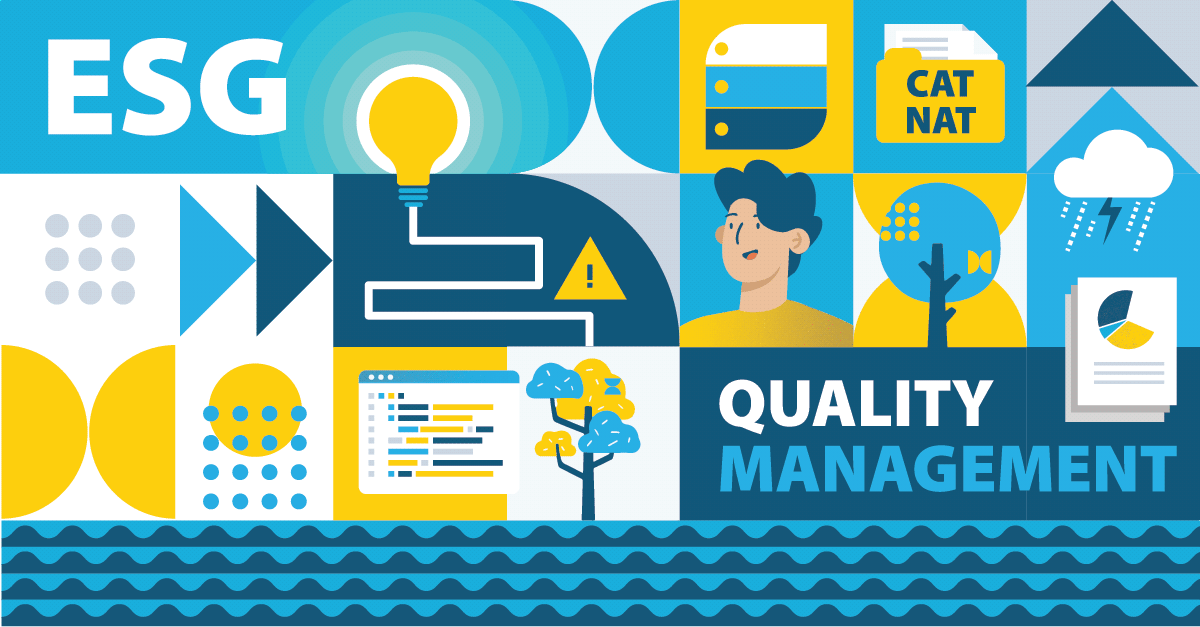Data is the common denominator of all efforts related to Environmental and Social Governance: it is estimated that data demand will grow by 30% due to ESG requirements. Environmental and social sustainability, catastrophe insurance policies in light of the latest regulatory updates, a modern approach to data quality, and data management aligned with evolving business needs—these were the key topics explored by the Data Management Working Groups for insurance companies, organized by Irion during the latest 2024 webinar.
In the first half of the year, the community of insurance data leaders focused on the challenges posed by the new European regulation DORA (Digital Operational Resilience Act), particularly the register of information—one of the new requirements for insurance companies. They also explored the role of Augmented Data Quality in ensuring compliance and reducing the workload of human resources, thanks to the support of Artificial Intelligence.
Not to be forgotten is the Data To Value Community, also promoted by Irion, which—after last year’s major event in Reggio Emilia—this year shared the results of the first tests on Project Valuation, the original analysis model (available for download) that makes it possible to calculate the economic contribution of data in company financial statements.
Data as productive factors
Putting data at the center of strategy means building a data system that supports business objectives. Traditionally, Quality Management practices have focused on executing controls. “We are witnessing a significant shift: data has now become one of the main productive factors. Just like people, processes, and technologies, it helps drive strategic goals—reshaping market positioning, increasing revenue, and improving the commercial offering. The key today is to structure an internal control system for information,” explained Mario Vellella, Domain Advisory Manager at Irion.
A fundamental principle is ensuring that data is democratically available to enable rapid innovation: if I need to build a new value proposition or customer experience, I’ll need information from all business functions. “I’ll have to ensure that people evolve, establish proper information governance with defined roles and responsibilities, and set internal rules for inputting data into the data platform. And I’ll need to equip myself with the right technologies to support all of this,” added the domain expert.
Going beyond traditional approaches (even with AI)
In the past, organizations have made several mistakes in their approach to Data Quality & Governance: from the lack of methods, standards, and quality metrics to govern processes, to an excessive focus on the mere formal correctness of controls (which alone does not ensure reliable data), and a patchwork of software tools without orchestration or a shared language and semantics. It has now become clear that “running controls is just one side of the coin” when it comes to data quality.
Moreover, “Data Quality controls are often not executed by a single engine, and many are still performed manually. It makes sense to design data architectures that take this distribution into account, aggregating the various contributions based on their intended use,” added Mauro Tuvo, Principal Consultant at Irion. Clarity and transparency are also essential—for example, Key Quality Indicators (KQIs) must be easily interpretable to avoid confusion among users.
In this context, Artificial Intelligence can provide strong support—but only if there is a solid foundation in place for managing the information assets. Automation of control processes It is crucial to ensure long-term effectiveness, especially as the number of data sources to be integrated and monitored increases. Thanks to ML and AI technologies, for which Irion EDM is natively designed (enabling their integration into data management processes through R and Python engines), data handling becomes easier with tools that translate queries into natural language. Examples include Smart Rule Propagation and Smart Discovery—features integrated into the platform—that help bring business users closer to autonomous data management.
Sustainability and climate crisis: between compliance and opportunity
“In ESG reporting, we face the need to manage and integrate a wide variety of data coming from numerous sources, both internal and external to the organization. This requires a cross-functional approach involving various business areas: sustainability, risk management, and governance. ESG data management must be well-structured, with clear disclosure requirements and accurate risk mapping,” explained Giacomo Saggioro, Senior Business Consultant at Irion, during his demo on in-depth analysis with Irion EDM of hundreds of Data Points (related to Environmental and Societal Governance) and the ability to drill down into the relevant ESRS standards.
Still on the topic of environment and sustainability, Irion Senior Business Consultant Lorena Crepaldi showcased the opportunities offered by public data from INGV (National Institute of Geophysics and Volcanology), such as seismic risk maps, in response to one of the hottest topics in the insurance sector: catastrophe insurance policies, due to the obligation introduced by the latest Budget Law. Although the data is available and can be used by insurance companies, models must be trained, tested, and validated using datasets monitored for accuracy, cardinality, and reliability, the expert pointed out. The risk map, for example, can be used by calculation engines after being loaded into a dedicated Data Hub. However, based on feedback from the Community, it currently appears that ESG data is managed more for regulatory compliance (NSRD, CSRD, and similar) than for actual risk management (such as assessing the likelihood and impact of claims).






